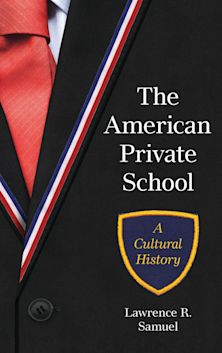- Home
- ACADEMIC
- Education
- Education - Other
- Adolescents Rewrite their Worlds
Adolescents Rewrite their Worlds
Using Literature to Illustrate Writing Forms
Adolescents Rewrite their Worlds
Using Literature to Illustrate Writing Forms
You must sign in to add this item to your wishlist. Please sign in or create an account
Description
Adolescents Rewrite their Worlds: Using Literature to Illustrate Writing Forms offers alternative ways teachers can engage young adolescents with the writing process using literature. The contributors discuss the values of writing in twenty-first-century classrooms and global societies, remarking that writing is first a personal exploration that is informed by cultural practices. Therefore culture is quite central in how we approach, explore, and express through any medium. The chapters consider ways to motivate students to become critically-conscious and active writers who are aware of their surrounding world, and the competing multiple discourses in which they are positioned. This requires intimate knowledge of audience, purpose, and genre and/or writing forms. We provide practical advice for teachers who wish to guide their students toward these goals. Additional features of this book include:
Authors/Contributors’ professional experiences of teaching writing using literaturePractical pedagogical practices that may transform the way teachers teach writing and use literatureInterviews with authors that give insight into their writing processWriting practices for twenty-first-century adolescents using new literacies
Table of Contents
List of Tables
Acknowledgments
Foreword:Patrick Shannon
Chapter 1: Literature: Art, Tool and More
Vivian Yenika-Agbaw
Chapter 2:The Transformative Power of Children’s Literature in the Classroom
Teresa Sychterz
Chapter 3:Writing Public Service Announcements and Genre Jabs
Jason Griffith
Chapter 4:Using Photo Story to Rewrite the Classics
Jason Griffith
Chapter 5:Multi-genre Projects and the Urban Classroom: An Examination of Language and Critical Literacy
Donna-Marie Cole-Malott
Chapter 6:Digital Literacy: Writing Biographies
Jason Moser
Chapter 7:Literature Responses and Academic Writing
Vivian Yenika-Agbaw
Chapter 8:Chatting with Artists
Mary Napoli & Sychterz
Chapter 9:Graphic Novels Comes Alive in a Sixth Grade Classroom
Mary Napoli & Teresa Sychterz
Appendix A:Transformative Teaching Practices
Appendix B:Teaching Resources
Contributor’s Biography
Product details
| Published | 08 Feb 2015 |
|---|---|
| Format | Ebook (Epub & Mobi) |
| Edition | 1st |
| Extent | 160 |
| ISBN | 9781475813241 |
| Imprint | Rowman & Littlefield Publishers |
| Illustrations | 30 BW Illustrations, 5 Tables |
| Publisher | Bloomsbury Publishing |
About the contributors
Reviews
-
Adolescents Rewrite their Worlds: Using Literature to Illustrate Writing Forms is definitely every middle school teacher's "go-to book" for reading and writing instruction. The contributors respect and understand that integrating digital literacies and multimodal projects into the language arts curriculum motivates and engages adolescents to read and write culturally authentic texts. Student choice and collaboration bring the meaning and social interactions that adolescents crave to projects such as writing graphic novels, creating film adaptations of texts, using Photo Story, and illustrator studies that marry technology with traditional writing tasks, always keeping the learner at the center. A book for the 21st century and beyond, the authors tap into what's important to students and suggest teaching and learning projects that can prepare students for the critical thinking and problem solving they need to be productive participants in our ever-changing global society. This is truly a must-have professional book for every middle school teacher!
Laura Robb, literacy coach, educational consultant, teacher, and author
-
Provide time, offer choice, and empower students! Adolescents Rewrite their Worlds: Using Literature to Illustrate Writing Forms is an inspiring collection of theoretical and engaging ideas that supports a teaching of literacy that goes beyond the simple mandate of skills. The authors share numerous classroom strategies on how to use children’s literature and meaningful writing pieces to transform and empower students’ cultural and democratic thinking. The book validates the importance of pleasure reading, and provides a refreshing look at multimodal compositions, digital biographies, multigenre projects, graphic novels, and visual literacy that will motivate all ELA teachers to try something new! During a time when it might be easy for teachers to be sucked into standards and prescribed methodologies, this book is a vital reminder that adolescents are more likely to choose to read, write, and think critically when classroom environments provide “space” for such practices.
Liz Gray, grade 6 ELA teacher, Carlisle Public Schools, Carlisle, MA



































